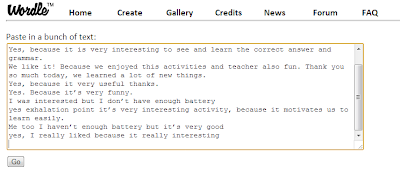This was shared with you last year, but it's so helpful that we wanted to share it again...
Most teachers seem to be using Google Drive to share handouts with students. Google Drive is an online "cloud" storage system that also includes the "Google Docs" productivity suite (Docs, Spreadsheets, and Presentations). In order to share resources with students, two things must happen. First, you must put the files in your Google Drive folder. Then, you must find a way of sharing the files with students. The easiest way of doing this is to create a Google Drive folder for all of your handouts.(This folder can have subfolders for different units. All subfolders within your main folder are also shared with the students.)
In the sharing settings, you have numerous options. I always make my folder "public on the web". This allows others to search for your folder (though it's nearly impossible to find). It's just my science handouts, and I am happy to share with others. You will be fine choosing any option except "Private".
Next, you will need to share it with your classes. Last year, I spent around 30 minutes typing all 120 student names and sharing my folder individually with each student. Now though, there is a MUCH simpler way to do this. Since all students have school Google accounts, you can share with a "class group". The folder is then shared with all students in that class group! As you can see in the image below, I shared my "Science Docs" folder with the class group for all of my science students. .
The class groups are generated through PowerSchool. This means it constantly gets updated as your PowerSchool rosters get updated. If you gain a new student in January, your handouts are automatically shared with them! Read Brian L'Heureux's blog post on the SLN (will need to log in) that explains where to find these class group codes in PowerSchool.
Important note #1: The class group code in the blog post starts with "1213" because it is from last year. Your class group code should begin with "1314".
Important note #2: Make sure your students only have "can view" privileges. You do NOT want to give your students "can edit" access. If you do, they can alter/delete all of your files!!














